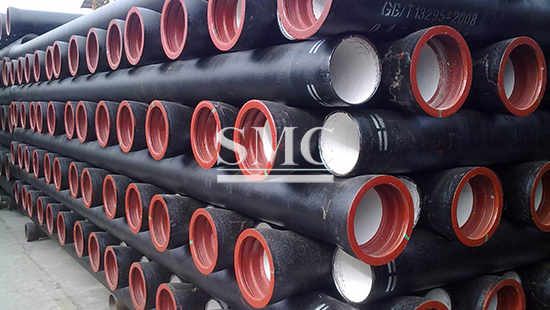Here we introduce the welding process of ductile iron and low carbon steel No. 20 steel and No. 15 steel.

(1) Welding of automobile transmission shaft
Typical products of automotive transmission shafts are welded from ductile iron QT400-15 and 20 steel pipes using arc cold welding. The technical points of its arc cold welding process are as follows:
① Before welding, clean the nodular cast iron QT40015 and 20 steel pipe to be welded, remove oil stains and rust, and expose the metal luster. The joint cleaning range is 20-30mm on the bevel and both sides.
② When the high vanadium electrode EZV (Z116) is selected as the filling material, there is no crack after welding. When using structural steel electrode E5015 or E5016 (J507 or J506), the weld has microcracks, and the mechanical properties of the welded joint after repair can meet the process requirements.
③ Welding uses small current, low voltage, short arc welding, small transmission shaft welding one layer, large transmission shaft welding two layers. After welding the first layer, cool it for a while and then weld the second layer to avoid overheating of the joint area.
④ Cool slowly after welding to avoid cracks due to the different linear expansion coefficients of the two base materials. Post-weld slow cooling during mass production of drive shafts can be performed in a heat treatment furnace.
(2) CO2 gas shielded welding of QT40015 and 15 steel
Ductile iron QT400-15 and 15 steel can be welded by CO2 gas shielded welding. When using Ho8Mn2SiA welding wire as the filling material for the connection section, it is necessary to add (surfacing) a high vanadium transition layer on the QT400-15 ductile iron groove. 441MPa. When high-vanadium tubular flux-cored wire is used, the tensile strength of the welded joint can reach 402 ~ 431MP.
Practice has shown that the use of CO2 gas shielded welding of ductile iron and carbon steel, because the welding wire has a fast melting speed, shallow penetration, small weld fusion ratio, easy adjustment of welding parameters, can accurately control the welding heat input and weld cross-section size. At the same time, CO2 airflow has a cooling effect on the weld and the heat-affected zone, which is beneficial to reduce the thermal stress of the welded joint and the width of the heat-affected zone. It has a good effect on preventing weld cracks and improving the processing performance of the welded joint. This method gradually Accepted and used by welders.
Guest contributors are welcome at the Alloy Wiki.It is a weekly wiki and guide on alloy information and processing technology, while also about the vast array of opportunities that are present in manufacturing. Our team of writers consists of a Machining Material Supplier / Machinist / Tool and Die Maker, a Biomedical Engineer / Product Development Engineer, a Job Development Coordinator / Adjunct Professor, and a President and CEO of a manufacturing facility.
Link to this article:Welding Technology of Carbon Steel and Nodular Cast Iron
Reprint Statement: If there are no special instructions, all articles on this site are original. Please indicate the source for reprinting:Alloy Wiki,thanks!^^


